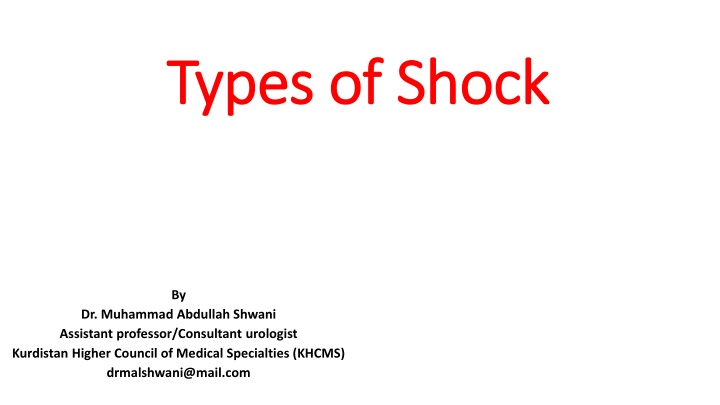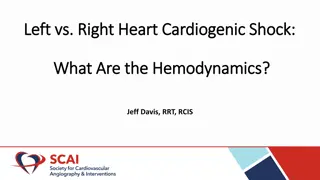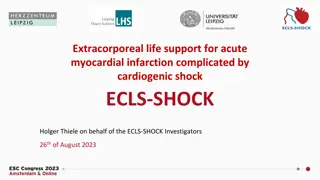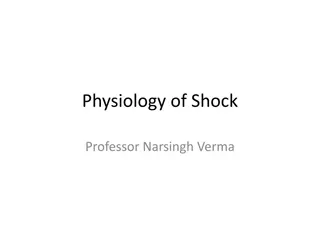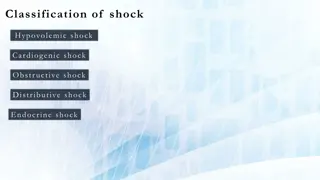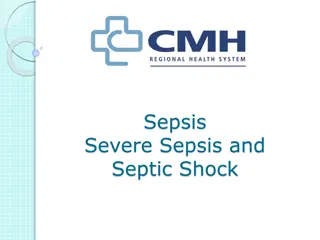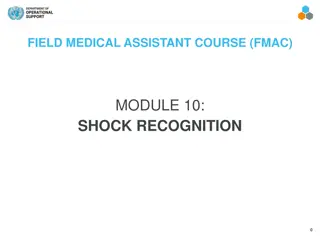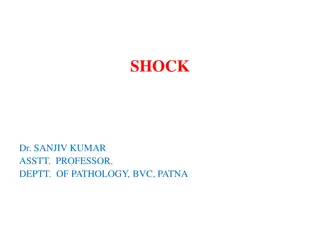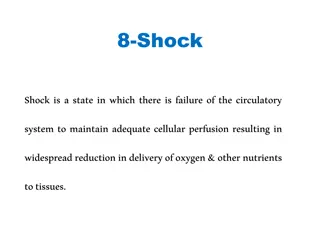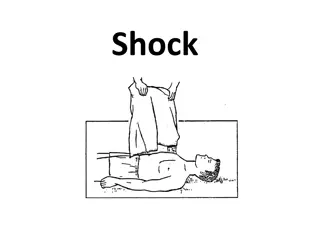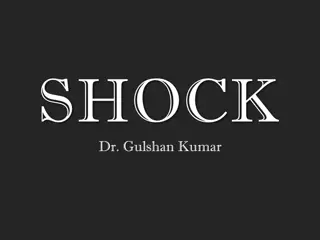Types of Shock
In this insightful article by Dr. Muhammad Abdullah Shwani, an Assistant Professor and Consultant Urologist at Kurdistan Higher Council of Medical Specialties, the various types of shock are discussed in detail. The content covers essential information about different types of shock, offering valuable insights for medical professionals and individuals interested in understanding this critical medical condition.
Download Presentation

Please find below an Image/Link to download the presentation.
The content on the website is provided AS IS for your information and personal use only. It may not be sold, licensed, or shared on other websites without obtaining consent from the author.If you encounter any issues during the download, it is possible that the publisher has removed the file from their server.
You are allowed to download the files provided on this website for personal or commercial use, subject to the condition that they are used lawfully. All files are the property of their respective owners.
The content on the website is provided AS IS for your information and personal use only. It may not be sold, licensed, or shared on other websites without obtaining consent from the author.
E N D
Presentation Transcript
Types of Shock Types of Shock By Dr. Muhammad Abdullah Shwani Assistant professor/Consultant urologist Kurdistan Higher Council of Medical Specialties (KHCMS) drmalshwani@mail.com
Definition Shock is Reduction of effective tissue perfusion leading to cellular and circulatory dysfunction Shock is a medical emergency if unrecognized or inadequately treated will result in high mortality
The aim of perfusion is to achieve adequate cellular oxygenation This requires Red cell oxygenation Red cell delivery to Tissues
Red cell oxygenation Red cell oxygenation It includes : 1- Oxygen delivery to alveoli which requires: Adequate fresh O2 Patent airways Adequate ventilation
Red cell oxygenation Red cell oxygenation 2-Oxygen exchange with the blood Adequate oxygen diffusion into the blood Adequate RBC capacity to bind to O2 which depend on :- PH Temperature
Maintaining perfusion requires Adequate Volume Normal Cardiac Function Normal Vessels Failure of one or more of these causes shock
Consequences of Shock Consequences of Shock Inadequate tissue perfusion Poor cellular oxygenation Shift from aerobic into an aerobic metabolism Inadequate energy production lactic acid formation metabolic acidosis cell death
Markers Of Hypoperfusion Serum Lactate Metabolic acidosis Hypotension
Signs and Symptoms of Shock Brain Decreased mental status Kidney Oliguria Liver Increased liver enzymes Lung Hypoxemia Peripheral Circulation Hypotension Cold Clammy skin
Effects of shock on body organs Effects of shock on body organs Reduced Perfusion Brain Heart Kidneys Lungs Liver Peripheral circulation Decreased mental status Hypoxia Myocardial depression Increase liver enzymes Hypotension Oliguria
Diagnosis of Shock Diagnosis of Shock Detailed history taking Detailed history taking Physical examination Physical examination Investigations Investigations
Investigations Investigations 1-Blood investigations CBC+ blood group- Rh RFT (urea, creatinine) LFT(liver enzymes) Serum electrolytes Serum lactate Blood gas analysis RBS Cardiac enzymes if are indicated 2-GUE 3-GSE 4-Samples of, urine, blood, sputum, or any discharges and body fluids for culture and sensitivity
Investigations Investigations 5-Imaging Ultrasonography Echo cardiography ECG CXR
Key Issues In Shock Recognize & Treat during the compensatory phase Best indicator of resuscitation effectiveness = Level of Consciousness Restlessness, anxiety = Earliest signs of shock Falling BP = LATE sign of shock. Pallor, tachycardia, slow capillary refill = hypoperfusion, until proven otherwise
Key Issues In Shock Tissue ischemic sensitivity Heart, brain, lung: 4 to 6 minutes GI tract, liver, kidney: 45 to 60 minutes Muscle, skin: 2 to 3 hours Resuscitate Critical Tissues First!
Types of Shock Hypovolemic (Blood volume problem) Cardiogenic (intracardiac vs extracardiac) (Blood pump problem) Obstructive(Filling problem) Distributive( Blood vessels problem) sepsis neurogenic (spinal shock) adrenal insufficiency Anaphylaxis
Hypovolemic shock Loss of Volume 1-Blood loss 2- Fluid loss 1-Trauma Dehydration 2- Non-Trauma Burns Vaginal Diarrhea GIT Sweating GUT Vomiting drugs( Diuresis) 3- Third space losses Pancreatitis Peritonitis Bowel obstruction
Hypovolemic Shock Management Restore circulating volume, tissue perfusion Correct cause A B C Two large bore IV lines/central line Fluids / Blood & Products /vasopressors Close monitoring of the vital signs BP PR RR Temperature Monitoring of fluid input-output Bladder catheter
Cardiogenic Shock Cardiogenic Shock = Pump Failure Causes : o Myopathic M I o CHF oCardiomyopathy oArrhythmic oTachycardia obradycardia oMechanical oValvular Failure
Treatment of Cardiogenic Shock Treat : rate, then rhythm, then BP 1- Correct bradycardia or tachycardia 2-Correct irregular rhythms 3- Treat BP Cardiac contractility (inotropes) Dobutamine, Dopamine
Distributive Shock Inadequate perfusion of tissues due to mal-distribution of blood flow( blood vessels problem ) The cardiac pump & blood volume are normal but blood is not reaching the tissues.
Types of Distributive Shock 1. Septic Shock 2. Anaphylactic Shock 3. Neurogenic 4. Endocrinologic
Septic Shock management A B C Assist ventilation & Augment Oxygenation Monitor Tissue perfusion- Restore Tissue perfusion by IV Fluids Vasopressors Identification & Eradication of septic foci Specific Therapies(Antibiotics)
Treatment of Neurogenic Shock Patient supine positioning lower extremities elevated Avoid Trendelenburg Infuse isotonic crystalloid fluid Maintain body temperature
Treatment of Anaphylactic Shock Antihistamines Corticosteroids Epinephrine Isotonic fluid
Obstructive shock Causes: 1-Impaired diastolic filling Cardiac tamponade Constrictive pericarditis Tension pneumothorax 2- Increased ventricular afterload Pulmonary embolism
Treatment of Obstructive Shock Treat the underlying cause Tension Pneumothorax put chest tube Pericardial Tamponade --- aspiration Anticoagulation heparin Isotonic fluids Control airway Intubation
